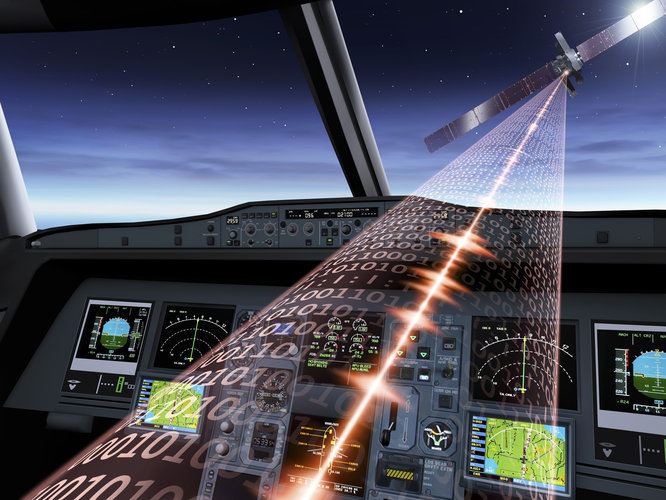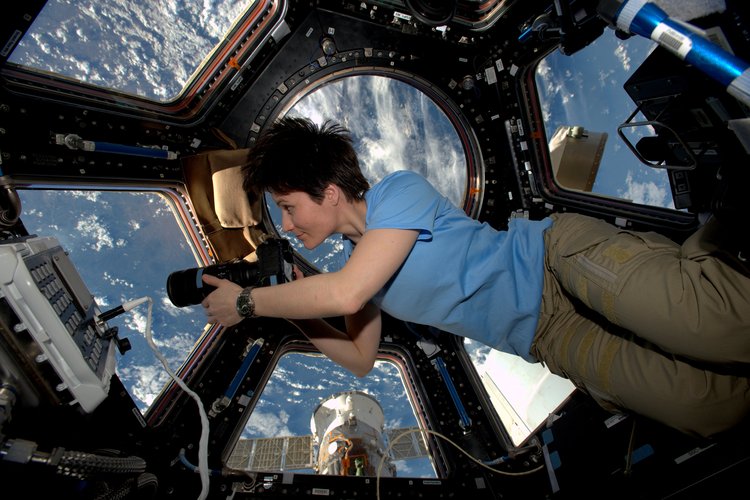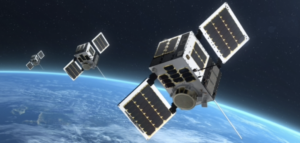NASA Supplier Completes Manufacturing Artemis III SLS Booster Motors
Thursday, 09 June 2022 10:05
Promontory UT (SPX) Jun 09, 2022
 The 10 Space Launch System (SLS) rocket motor segments that will help launch the Artemis III crew on their mission to land on the Moon are complete. Teams finished manufacturing the segments for the mission on May 18, 2022.
Each of the twin solid rocket boosters is made up of five motor segments that will be stacked with the rest of the booster parts before flight. The twin boosters supply
The 10 Space Launch System (SLS) rocket motor segments that will help launch the Artemis III crew on their mission to land on the Moon are complete. Teams finished manufacturing the segments for the mission on May 18, 2022.
Each of the twin solid rocket boosters is made up of five motor segments that will be stacked with the rest of the booster parts before flight. The twin boosters supply
 The 10 Space Launch System (SLS) rocket motor segments that will help launch the Artemis III crew on their mission to land on the Moon are complete. Teams finished manufacturing the segments for the mission on May 18, 2022.
Each of the twin solid rocket boosters is made up of five motor segments that will be stacked with the rest of the booster parts before flight. The twin boosters supply
The 10 Space Launch System (SLS) rocket motor segments that will help launch the Artemis III crew on their mission to land on the Moon are complete. Teams finished manufacturing the segments for the mission on May 18, 2022.
Each of the twin solid rocket boosters is made up of five motor segments that will be stacked with the rest of the booster parts before flight. The twin boosters supply France Signs Artemis Accords as French Space Agency Marks Milestone
Thursday, 09 June 2022 10:05
Washington DC (SPX) Jun 09, 2022
 France is the latest country to sign the Artemis Accords, affirming its commitment to sustainable space exploration that follows a common set of principles promoting beneficial use of space for all of humanity.
Philippe Baptiste, president of the Centre National d'Etudes Spatiales (CNES) - the French space agency - signed the document during an event hosted by the Ambassador of France to t
France is the latest country to sign the Artemis Accords, affirming its commitment to sustainable space exploration that follows a common set of principles promoting beneficial use of space for all of humanity.
Philippe Baptiste, president of the Centre National d'Etudes Spatiales (CNES) - the French space agency - signed the document during an event hosted by the Ambassador of France to t
 France is the latest country to sign the Artemis Accords, affirming its commitment to sustainable space exploration that follows a common set of principles promoting beneficial use of space for all of humanity.
Philippe Baptiste, president of the Centre National d'Etudes Spatiales (CNES) - the French space agency - signed the document during an event hosted by the Ambassador of France to t
France is the latest country to sign the Artemis Accords, affirming its commitment to sustainable space exploration that follows a common set of principles promoting beneficial use of space for all of humanity.
Philippe Baptiste, president of the Centre National d'Etudes Spatiales (CNES) - the French space agency - signed the document during an event hosted by the Ambassador of France to t Iris system to digitalise airspace goes global
Thursday, 09 June 2022 07:45
A space-enabled system to help clear congested skies while reducing carbon emissions is going global, following a deal signed today between satellite communications provider Inmarsat and ESA.
Watch live: FT Investing in Space sessions with Samantha Cristoforetti and Josef Aschbacher
Thursday, 09 June 2022 07:13
House armed services panel calls on DoD to buy commercial space technology and data
Wednesday, 08 June 2022 20:55
The House Armed Services Committee’s subcommittee on strategic forces on June 8 passed its proposals for the Fiscal Year 2023 National Defense Authorization Act.
The post House armed services panel calls on DoD to buy commercial space technology and data appeared first on SpaceNews.
Inmarsat satellite tests signal for replacing lost UK navigation capability
Wednesday, 08 June 2022 20:10
Inmarsat said June 8 it has started beaming a test navigation signal from an aging satellite to help the United Kingdom replace space-based capabilities it lost following Brexit.
Keeping Our Sense of Direction: Dealing With a Dead Sensor
Wednesday, 08 June 2022 19:59
Pasadena CA (JPL) Jun 08, 2022
 As the season has turned to winter in Jezero Crater, conditions have become increasingly challenging for Ingenuity, which was designed for a short flight-test campaign during the much warmer Martian spring. Increased amounts of dust in the atmosphere, combined with lower daytime temperatures and shorter days, have impacted Ingenuity's energy budget to the point where it is unable to keep itself
As the season has turned to winter in Jezero Crater, conditions have become increasingly challenging for Ingenuity, which was designed for a short flight-test campaign during the much warmer Martian spring. Increased amounts of dust in the atmosphere, combined with lower daytime temperatures and shorter days, have impacted Ingenuity's energy budget to the point where it is unable to keep itself
 As the season has turned to winter in Jezero Crater, conditions have become increasingly challenging for Ingenuity, which was designed for a short flight-test campaign during the much warmer Martian spring. Increased amounts of dust in the atmosphere, combined with lower daytime temperatures and shorter days, have impacted Ingenuity's energy budget to the point where it is unable to keep itself
As the season has turned to winter in Jezero Crater, conditions have become increasingly challenging for Ingenuity, which was designed for a short flight-test campaign during the much warmer Martian spring. Increased amounts of dust in the atmosphere, combined with lower daytime temperatures and shorter days, have impacted Ingenuity's energy budget to the point where it is unable to keep itself UK and US to launch Joint Mission Aboard UK's first Virgin Orbit orbital flight
Wednesday, 08 June 2022 19:59
Long Beach CA (SPX) Jun 08, 2022
 Satellite launch company Virgin Orbit (Nasdaq: VORB) announces today that a joint mission between the United Kingdom's Defense Science and Technology Laboratory and the United States Naval Research Laboratory (NRL) is expected to be lofted on the first space launch out of Spaceport Cornwall later this year.
The government agencies' joint Coordinated Ionospheric Reconstruction CubeSat Exper
Satellite launch company Virgin Orbit (Nasdaq: VORB) announces today that a joint mission between the United Kingdom's Defense Science and Technology Laboratory and the United States Naval Research Laboratory (NRL) is expected to be lofted on the first space launch out of Spaceport Cornwall later this year.
The government agencies' joint Coordinated Ionospheric Reconstruction CubeSat Exper
 Satellite launch company Virgin Orbit (Nasdaq: VORB) announces today that a joint mission between the United Kingdom's Defense Science and Technology Laboratory and the United States Naval Research Laboratory (NRL) is expected to be lofted on the first space launch out of Spaceport Cornwall later this year.
The government agencies' joint Coordinated Ionospheric Reconstruction CubeSat Exper
Satellite launch company Virgin Orbit (Nasdaq: VORB) announces today that a joint mission between the United Kingdom's Defense Science and Technology Laboratory and the United States Naval Research Laboratory (NRL) is expected to be lofted on the first space launch out of Spaceport Cornwall later this year.
The government agencies' joint Coordinated Ionospheric Reconstruction CubeSat Exper Dragon Mission on Hold as Astronauts Conduct Eye Exams, Spacesuit Work
Wednesday, 08 June 2022 19:59
Washington DC (SPX) Jun 08, 2022
 NASA and SpaceX are standing down from this week's Falcon 9 launch of the CRS-25 cargo mission to the International Space Station. Officials from NASA and SpaceX met today to discuss an issue identified over the weekend and the best path forward.
During propellant loading of the Dragon spacecraft, elevated vapor readings of mono-methyl hydrazine (MMH) were measured in an isolated region of
NASA and SpaceX are standing down from this week's Falcon 9 launch of the CRS-25 cargo mission to the International Space Station. Officials from NASA and SpaceX met today to discuss an issue identified over the weekend and the best path forward.
During propellant loading of the Dragon spacecraft, elevated vapor readings of mono-methyl hydrazine (MMH) were measured in an isolated region of
 NASA and SpaceX are standing down from this week's Falcon 9 launch of the CRS-25 cargo mission to the International Space Station. Officials from NASA and SpaceX met today to discuss an issue identified over the weekend and the best path forward.
During propellant loading of the Dragon spacecraft, elevated vapor readings of mono-methyl hydrazine (MMH) were measured in an isolated region of
NASA and SpaceX are standing down from this week's Falcon 9 launch of the CRS-25 cargo mission to the International Space Station. Officials from NASA and SpaceX met today to discuss an issue identified over the weekend and the best path forward.
During propellant loading of the Dragon spacecraft, elevated vapor readings of mono-methyl hydrazine (MMH) were measured in an isolated region of NRL CIRCE spacecraft to be part of historic UK launch
Wednesday, 08 June 2022 19:59
Washington DC (SPX) Jun 08, 2022
 A joint U.S. Naval Research Laboratory (NRL)/ U.K. Defence Science and Technology Laboratory (Dstl) experiment is preparing to measure Earth's ionosphere and particle radiation environment as part of the Coordinated Ionospheric Reconstruction CubeSat Experiment (CIRCE) mission.
Space Systems Command is partnering with Virgin Orbit National Systems, a U.S.-incorporated, wholly-owned subsidi
A joint U.S. Naval Research Laboratory (NRL)/ U.K. Defence Science and Technology Laboratory (Dstl) experiment is preparing to measure Earth's ionosphere and particle radiation environment as part of the Coordinated Ionospheric Reconstruction CubeSat Experiment (CIRCE) mission.
Space Systems Command is partnering with Virgin Orbit National Systems, a U.S.-incorporated, wholly-owned subsidi
 A joint U.S. Naval Research Laboratory (NRL)/ U.K. Defence Science and Technology Laboratory (Dstl) experiment is preparing to measure Earth's ionosphere and particle radiation environment as part of the Coordinated Ionospheric Reconstruction CubeSat Experiment (CIRCE) mission.
Space Systems Command is partnering with Virgin Orbit National Systems, a U.S.-incorporated, wholly-owned subsidi
A joint U.S. Naval Research Laboratory (NRL)/ U.K. Defence Science and Technology Laboratory (Dstl) experiment is preparing to measure Earth's ionosphere and particle radiation environment as part of the Coordinated Ionospheric Reconstruction CubeSat Experiment (CIRCE) mission.
Space Systems Command is partnering with Virgin Orbit National Systems, a U.S.-incorporated, wholly-owned subsidi CIRCE space weather suite announced for first UK satellite launch
Wednesday, 08 June 2022 19:59
London, UK (SPX) Jun 08, 2022
 The Defence Science and Technology Laboratory's (Dstl) miniaturised space weather instrumentation suite will be one of the payloads aboard Virgin Orbit which is targeting the first UK satellite launch this summer from Spaceport Cornwall in Newquay. Virgin Orbit's Launcher One rocket takes off horizontally, carried aloft by a modified Boeing 747 jet, named Cosmic Girl.
The Coordinated Ionos
The Defence Science and Technology Laboratory's (Dstl) miniaturised space weather instrumentation suite will be one of the payloads aboard Virgin Orbit which is targeting the first UK satellite launch this summer from Spaceport Cornwall in Newquay. Virgin Orbit's Launcher One rocket takes off horizontally, carried aloft by a modified Boeing 747 jet, named Cosmic Girl.
The Coordinated Ionos
 The Defence Science and Technology Laboratory's (Dstl) miniaturised space weather instrumentation suite will be one of the payloads aboard Virgin Orbit which is targeting the first UK satellite launch this summer from Spaceport Cornwall in Newquay. Virgin Orbit's Launcher One rocket takes off horizontally, carried aloft by a modified Boeing 747 jet, named Cosmic Girl.
The Coordinated Ionos
The Defence Science and Technology Laboratory's (Dstl) miniaturised space weather instrumentation suite will be one of the payloads aboard Virgin Orbit which is targeting the first UK satellite launch this summer from Spaceport Cornwall in Newquay. Virgin Orbit's Launcher One rocket takes off horizontally, carried aloft by a modified Boeing 747 jet, named Cosmic Girl.
The Coordinated Ionos Colossal Collisions Linked to Solar System Science
Wednesday, 08 June 2022 19:59
Boston MA (SPX) Jun 08, 2022
 A new study shows a deep connection between some of the largest, most energetic events in the Universe and much smaller, weaker ones powered by our own Sun.
The results come from a long observation with NASA's Chandra X-ray Observatory of Abell 2146, a pair of colliding galaxy clusters located about 2.8 billion light years from Earth. The new study was led by Helen Russell of the Universit
A new study shows a deep connection between some of the largest, most energetic events in the Universe and much smaller, weaker ones powered by our own Sun.
The results come from a long observation with NASA's Chandra X-ray Observatory of Abell 2146, a pair of colliding galaxy clusters located about 2.8 billion light years from Earth. The new study was led by Helen Russell of the Universit
 A new study shows a deep connection between some of the largest, most energetic events in the Universe and much smaller, weaker ones powered by our own Sun.
The results come from a long observation with NASA's Chandra X-ray Observatory of Abell 2146, a pair of colliding galaxy clusters located about 2.8 billion light years from Earth. The new study was led by Helen Russell of the Universit
A new study shows a deep connection between some of the largest, most energetic events in the Universe and much smaller, weaker ones powered by our own Sun.
The results come from a long observation with NASA's Chandra X-ray Observatory of Abell 2146, a pair of colliding galaxy clusters located about 2.8 billion light years from Earth. The new study was led by Helen Russell of the Universit Abell 2146: Colossal Collisions Linked to Solar System Science
Wednesday, 08 June 2022 19:59
Huntsville AL (SPX) Jun 08, 2022
 A new study shows a deep connection between some of the largest, most energetic events in the Universe and much smaller, weaker ones powered by our own Sun.
The results come from a long observation with NASA's Chandra X-ray Observatory of Abell 2146, a pair of colliding galaxy clusters located about 2.8 billion light years from Earth. The new study was led by Helen Russell of the Universit
A new study shows a deep connection between some of the largest, most energetic events in the Universe and much smaller, weaker ones powered by our own Sun.
The results come from a long observation with NASA's Chandra X-ray Observatory of Abell 2146, a pair of colliding galaxy clusters located about 2.8 billion light years from Earth. The new study was led by Helen Russell of the Universit
 A new study shows a deep connection between some of the largest, most energetic events in the Universe and much smaller, weaker ones powered by our own Sun.
The results come from a long observation with NASA's Chandra X-ray Observatory of Abell 2146, a pair of colliding galaxy clusters located about 2.8 billion light years from Earth. The new study was led by Helen Russell of the Universit
A new study shows a deep connection between some of the largest, most energetic events in the Universe and much smaller, weaker ones powered by our own Sun.
The results come from a long observation with NASA's Chandra X-ray Observatory of Abell 2146, a pair of colliding galaxy clusters located about 2.8 billion light years from Earth. The new study was led by Helen Russell of the Universit Detecting new particles around black holes with gravitational waves
Wednesday, 08 June 2022 19:59
Amsterdam. Netherlands (SPX) Jun 08, 2022
 Clouds of ultralight particles can form around rotating black holes. A team of physicists from the University of Amsterdam and Harvard University now show that these clouds would leave a characteristic imprint on the gravitational waves emitted by binary black holes.
Black holes are generally thought to swallow all forms of matter and energy surrounding them. It has long been known, howeve
Clouds of ultralight particles can form around rotating black holes. A team of physicists from the University of Amsterdam and Harvard University now show that these clouds would leave a characteristic imprint on the gravitational waves emitted by binary black holes.
Black holes are generally thought to swallow all forms of matter and energy surrounding them. It has long been known, howeve
 Clouds of ultralight particles can form around rotating black holes. A team of physicists from the University of Amsterdam and Harvard University now show that these clouds would leave a characteristic imprint on the gravitational waves emitted by binary black holes.
Black holes are generally thought to swallow all forms of matter and energy surrounding them. It has long been known, howeve
Clouds of ultralight particles can form around rotating black holes. A team of physicists from the University of Amsterdam and Harvard University now show that these clouds would leave a characteristic imprint on the gravitational waves emitted by binary black holes.
Black holes are generally thought to swallow all forms of matter and energy surrounding them. It has long been known, howeve The end of the cosmic dawn
Wednesday, 08 June 2022 19:59
Munich, Germany (SPX) Jun 08, 2022
 A group of astronomers led by Sarah Bosman from the Max Planck Institute for Astronomy have robustly timed the end of the epoch of reionisation of the neutral hydrogen gas to about 1.1 billion years after the Big Bang. Reionisation began when the first generation of stars formed after the cosmic "dark ages", a long period when neutral gas alone filled the Universe without any sources of light. T
A group of astronomers led by Sarah Bosman from the Max Planck Institute for Astronomy have robustly timed the end of the epoch of reionisation of the neutral hydrogen gas to about 1.1 billion years after the Big Bang. Reionisation began when the first generation of stars formed after the cosmic "dark ages", a long period when neutral gas alone filled the Universe without any sources of light. T
 A group of astronomers led by Sarah Bosman from the Max Planck Institute for Astronomy have robustly timed the end of the epoch of reionisation of the neutral hydrogen gas to about 1.1 billion years after the Big Bang. Reionisation began when the first generation of stars formed after the cosmic "dark ages", a long period when neutral gas alone filled the Universe without any sources of light. T
A group of astronomers led by Sarah Bosman from the Max Planck Institute for Astronomy have robustly timed the end of the epoch of reionisation of the neutral hydrogen gas to about 1.1 billion years after the Big Bang. Reionisation began when the first generation of stars formed after the cosmic "dark ages", a long period when neutral gas alone filled the Universe without any sources of light. T 
